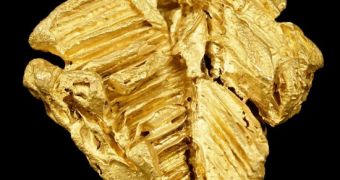According to a research whose findings were published in the scientific journal Nature Geoscience this past March 17, earthquakes are bound to turn water to gold.
Furthermore, it appears that gold-creating earthquakes need not even be of a great magnitude. Quite the contrary: even the smallest quake is fully capable of triggering the process by which gold is obtained from water.
The specialists who took the time to investigate this issue argue that earthquakes cause the water inside faults jogs to vaporize fairly quickly, Live Science explains.
Since this water also happens to pack various concentrations of gold, amongst several other chemical compounds, it need not come as a surprise that, once the water gets vaporized, the gold is left behind.
The only downside is that, as the researchers explain, the water found inside faults jogs contains gold in average concentrations of just one part per million.
This means that, even if an earthquake does occur and water does indeed get turned to gold, the amount of gold that is obtained is a rather small one.
However, it is the scientists’ belief that this process explains how economic gold deposits get created in time. Lead author Dion Weatherley, a geophysicist currently working with the University of Queensland, argued as follows:
“Given that small-magnitude earthquakes are exceptionally frequent in fault systems, this process may be the primary driver for the formation of economic gold deposits.” However, he did wish to stress the fact that, “Large quantities of gold may be deposited in only a few hundred thousand years.”
Interestingly enough, Dion Weatherley and his colleagues are quite convinced that similar processes take place underneath volcanoes.
According to The Inqusitr, several other scientists have pointed out the fact that the ideas brought forth in this study are by no means revolutionary ones.
Still, Dion Weatherley emphasized that, “This new knowledge on gold-deposit formation mechanisms may assist future gold exploration efforts.”

 14 DAY TRIAL //
14 DAY TRIAL //